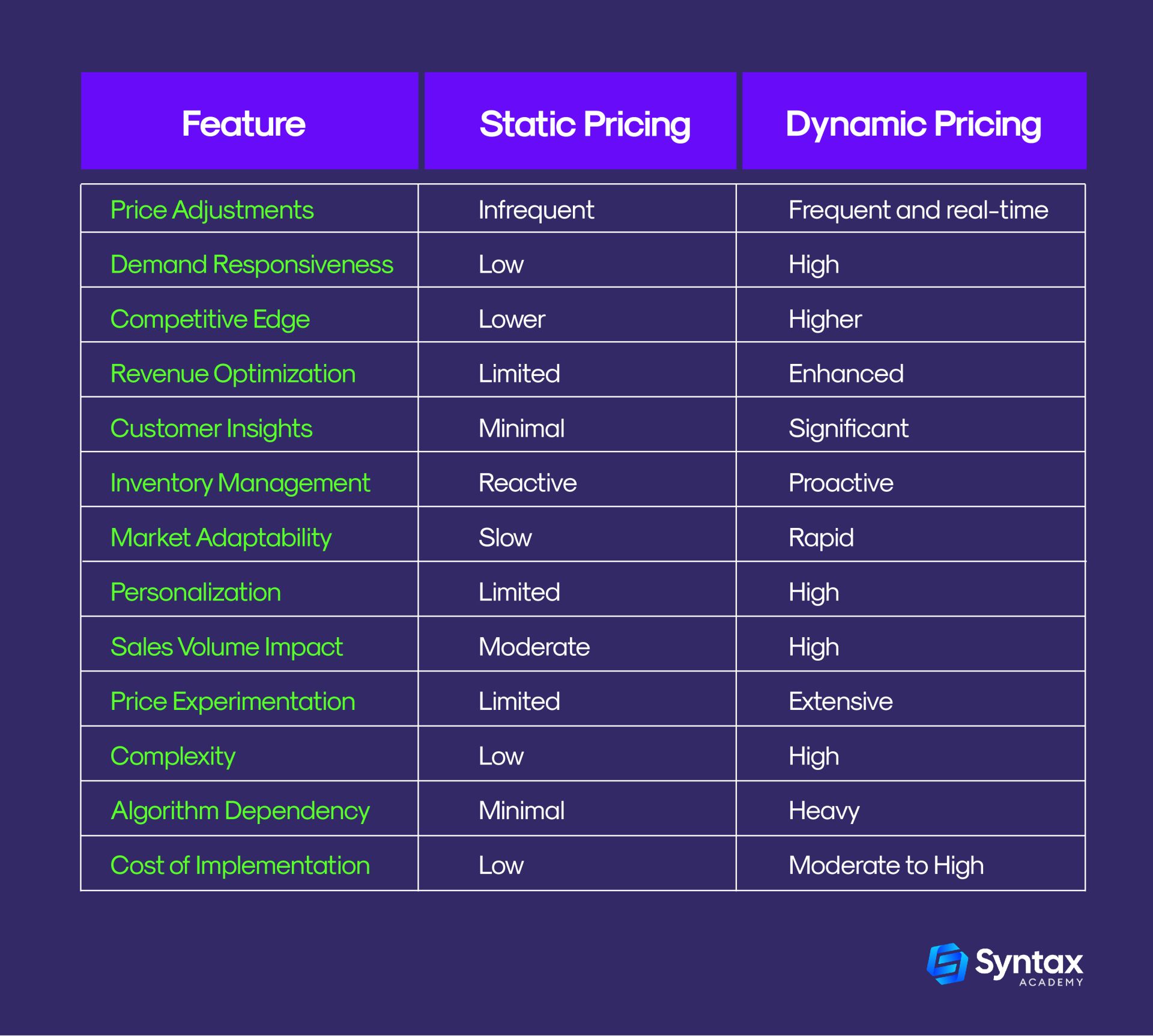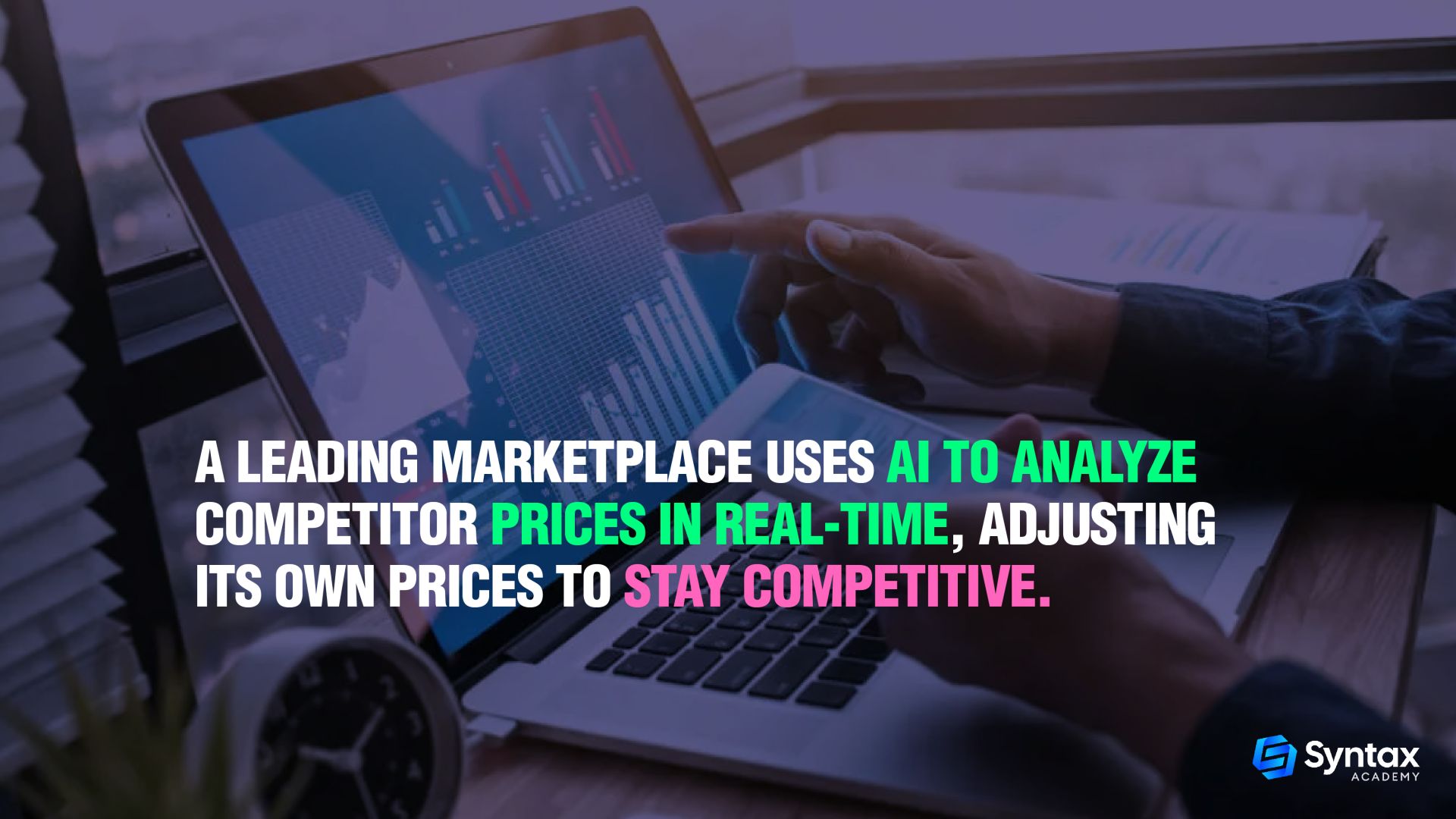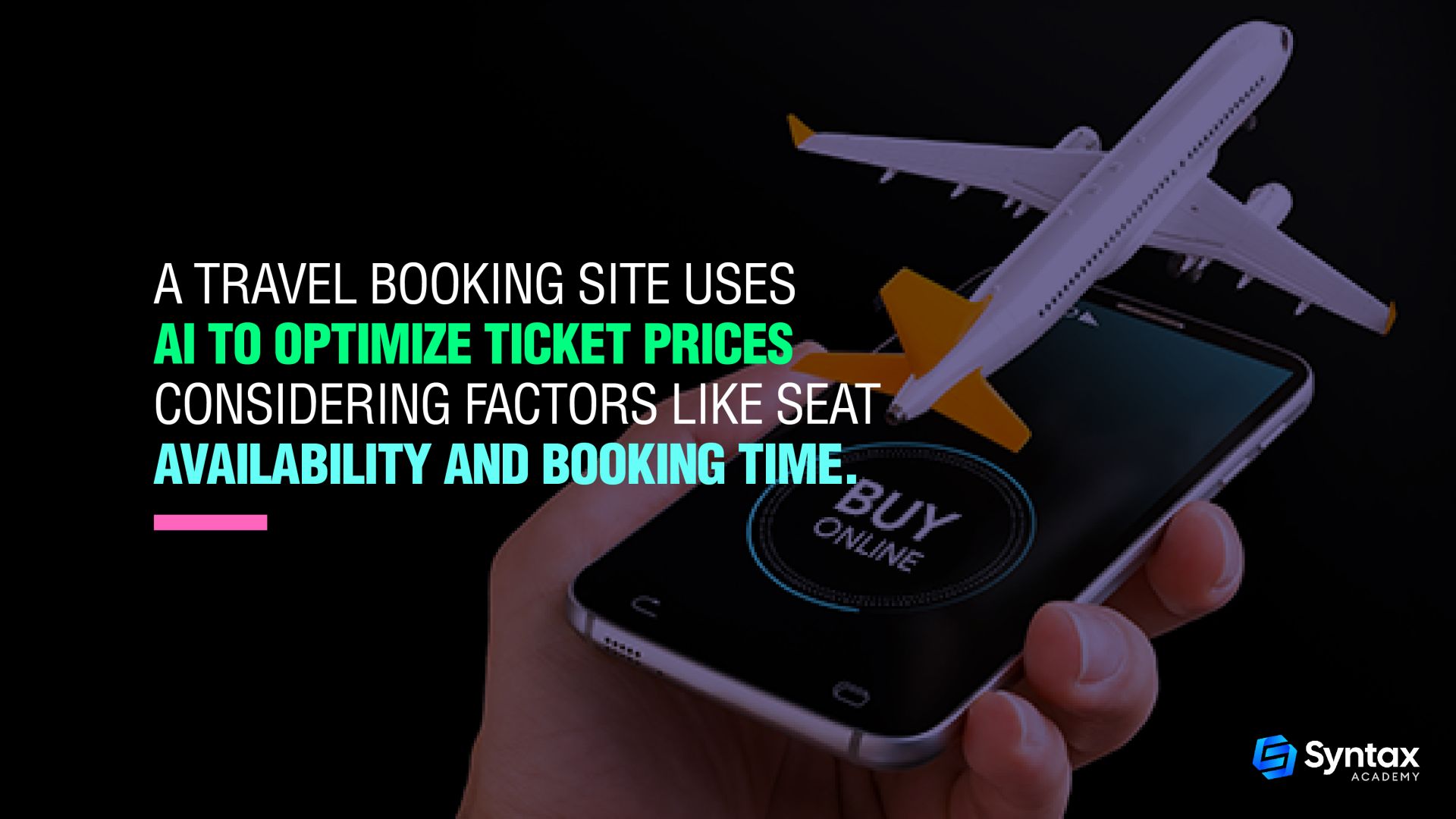AI-Driven Dynamic Pricing Strategies: How E-commerce Businesses Can Stay Competitive

In this post, we’ll break down how AI-powered dynamic pricing works, why it’s so helpful, some great strategies you can use, and of course, the challenges that come with it.
Table of Contents
-
1. What is Dynamic Pricing in E-Commerce?
-
2. Why Bother with Dynamic Pricing?
-
3. Static vs. Dynamic Pricing in E-Commerce: A Tabular Comparison
-
4. How AI Powers Dynamic Pricing
-
5. Types of AI-driven Dynamic Pricing Strategies in E-Commerce
-
6. The Challenges
-
7. Conclusion
1. What is Dynamic Pricing in E-Commerce?
Dynamic pricing helps e-commerce businesses make the most money while staying attractive to shoppers.

2. Why Bother with Dynamic Pricing?
- Boost Your Revenue
- One of the biggest perks? You can make more money. When demand is high, prices go up, and you earn more.
- Example: Ever noticed how Amazon’s prices seem to change like the weather? That’s because they raise prices when people are most likely to shop, especially during busy hours.
- Stay Ahead of the Competition
- It’s tough out there, and you don’t want to lose customers to lower prices elsewhere. Dynamic pricing lets you keep an eye on competitors and tweak your prices to stay in the game.
- Example: Travel sites like Expedia do this all the time. They keep their rates competitive to grab bookings before someone else does.
- Smarter Inventory Management:
- Got too much stock sitting around? Dynamic pricing can help you move products before they gather dust.
- Example: Think about how clothing stores discount seasonal items at the end of the season. It’s better to sell at a lower price than hold onto outdated stock.
- Bigger Profit Margins
- By adjusting prices for different types of customers, you can make more profit from those willing to spend a bit extra.
- Example: Tech lovers often pay a premium to get their hands on the latest gadgets first. Smart pricing lets businesses tap into that.
- More Sales
- Lower prices during slow times can attract more customers, boosting your overall sales.
- Example: Uber does this well. They offer cheaper rides during off-peak hours, which keeps their drivers busy and their customers happy.
3. Static vs. Dynamic Pricing in E-Commerce: A Tabular Comparison

4. How AI Powers Dynamic Pricing
1. Collecting and Analyzing Data
AI gobbles up data from all sorts of places—your competitor’s prices, what your customers are up to, and even sales trends from the past.

Once the data’s in, AI crunches the numbers to spot patterns. It can predict when demand will go up or down, and what prices will likely work best.

AI doesn’t just spit out suggestions. It takes action by automatically adjusting prices based on its analysis, helping you maximize your revenue.

AI is like that friend who learns from every experience. The more it analyzes pricing strategies and customer behavior, the better it gets at fine-tuning prices.
Example: Imagine a global e-commerce store using AI to keep prices consistent across markets. It’s always tweaking based on real-time data, so the business never misses a beat.
5. Types of AI-driven Dynamic Pricing Strategies in E-Commerce

6. The Challenges
Data Quality Issues
- AI is only as good as the data it uses. If the data is off, your pricing will be too.
- Example: If an e-commerce platform uses old competitor pricing data, it might adjust prices too high or too low, hurting profits.
- Customer Trust
- Customers can get a little irritated when prices change too much or too often.
- Example: Imagine buying a product, then seeing the price drop a day later. Frustrating, right? If customers feel they’re being duped, they’ll head elsewhere.
- Legal and Ethical Considerations
- Dynamic pricing has to play by the rules. You’ve got to be careful about price discrimination and consumer protection laws.
- Example: Charging people different prices based on their location can be tricky, and in some places, it’s a no-go.
- AI Transparency
- AI’s decisions aren’t always easy to explain, and that can cause problems if customers feel there’s bias involved.
- Example: If an AI system unintentionally favors certain demographics, it could lead to unfair pricing practices.
- Integrating with Existing Systems
- Bringing AI-driven pricing into your current setup can be a bit of a puzzle, especially if your systems are older.
- Example: A retailer with legacy systems might struggle to get everything working smoothly, leading to challenges in the pricing strategy.
6. Wrapping It Up
AI-driven dynamic pricing is a powerhouse for e-commerce businesses, helping you adjust prices in real-time, boost revenue, and stay ahead of competitors. By pulling data from everywhere and using smart algorithms, you can react faster than ever to market changes. Sure, there are challenges, but the potential rewards far outweigh the risks if you handle it carefully. Want to learn more about how you can get ahead in the e-commerce world? Check out Syntax Academy’s courses on e-commerce, AI-driven pricing, digital marketing, and more. It’s all about staying sharp in this ever-changing field.
Share with your community!
Related Article

Digital Marketing
How to Start a Career in Digital Marketing: The Essential Roadmap
By: Martha James
Picture this: Every time you scroll through social media, search for a product on Google, or watch a YouTube ad, you’re witnessing the power of Digital Marketing in action. Now, imagine being the person behind those campaigns, driving brands to the forefront of the digital world. Sounds exciting, right?This blog is your step-by-step guide to breaking into the world of Digital Marketing. Whether you’re just starting out, thinking about switching careers, or curious about how this field works, I’ll walk you through everything—from the essential skills you need to the tools you’ll use, and how to build your personal brand along the way.
Read More

ChatGPT
Integrating ChatGPT into Business Operations: Best Practices
By: Martha James
Running a business can be a balancing act, especially when it comes to keeping operations efficient while still providing top-notch service. Enter ChatGPT—a tool that can change the game. By integrating this AI assistant into your business, you can boost customer support, automate repetitive tasks, and analyze data like never before. This blog will guide you through how ChatGPT can enhance your operations, from the preparatory work to the actual integration, and share best practices to make the transition seamless and impactful.
Read More

Career and Jobs
How to Boost Your Tech Career: Tips for Skill Development and Networking
By: Martha James
Feeling stuck in your tech career? You’re not alone. The tech world moves faster than we can keep up with sometimes, and if you don’t stay ahead, you might find yourself falling behind.Picture this: you're a developer who just landed a fantastic job, but a few years later, those skills that once made you shine are now seen as the bare minimum. So, what’s the game plan? Whether you're just getting started or aiming to level up, staying relevant is all about two things: building your skills and growing your network.In this blog, we’ll explore practical strategies to keep your tech career thriving. From participating in hackathons to contributing to open-source projects and developing meaningful connections, these tips will help you stay ahead in the fast-moving tech industry.
Read More
Professionals from Industry Pioneers Choose
Syntax Academy for Skill Mastery
